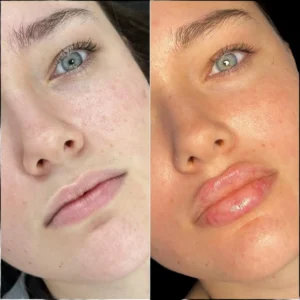In today’s world, where social media influence and celebrity culture dictate beauty standards, cosmetic procedures like liposuction have become a mainstay for many seeking to emulate A-list aesthetics. The desire for sculpted bodies and flawless appearances has fueled a booming industry, but it is essential to understand not only the allure but also the complexities behind these transformations. While liposuction promises a swift path to body confidence, it’s crucial to acknowledge the liposuction side effects that come with this popular procedure. Beyond the physical implications, the economics surrounding liposuction reveal much about society’s obsession with beauty and the luxury of maintaining it by appointment.
The Rise of Liposuction in Celebrity Culture
Liposuction’s rise to fame is closely linked to the celebrity world, where image is everything. Stars from Hollywood to international pop icons often set trends that ripple across global audiences. When a beloved celebrity reveals their secret to a sculpted figure, it quickly becomes a sought-after service. Liposuction offers an effective solution to stubborn fat deposits that resist diet and exercise, making it especially appealing for those in the public eye who must maintain a certain look.
This procedure, once considered a luxury exclusive to the elite, has now become more accessible due to advances in technology and a wider range of clinics offering competitive pricing. However, the decision to undergo liposuction is rarely casual, and the costs extend far beyond the financial. The time required for recovery and potential complications demand careful consideration.
Understanding the Financial Dynamics of Liposuction
Liposuction is more than a medical procedure; it is a significant financial investment. The cost of liposuction varies widely depending on the location, surgeon’s expertise, and extent of the treatment. For celebrities and high-profile individuals, the price tag can reach tens of thousands of dollars due to customized procedures and luxury clinic settings.
This economic aspect reflects a broader market driven by demand for perfection. Clinics market liposuction not just as a medical service but as a lifestyle upgrade, bundling it with other aesthetic treatments and post-operative care packages. The willingness to invest heavily in appearance underscores how physical beauty has become a commodity, especially for those whose careers depend on their image.
The Hidden Costs: Beyond the Price Tag
While the upfront cost of liposuction can be daunting, many patients underestimate the hidden expenses that come with the procedure. Post-operative care, potential follow-up treatments, and management of side effects can add significantly to the total cost.
Moreover, the psychological impact and time lost during recovery are often overlooked. Patients must take time off work and social commitments, and the emotional toll of coping with swelling, bruising, or dissatisfaction with results can be profound. For celebrities, this downtime can mean lost professional opportunities, making the stakes even higher.
Liposuction Side Effects: What Patients Should Know
At the heart of any cosmetic procedure lies the balance between desired outcomes and possible risks. While liposuction can dramatically improve body contour, it carries potential side effects that vary in severity. Common issues include swelling, bruising, numbness, and temporary pain, but more serious complications can also occur, such as infections or irregular contours.
Understanding liposuction side effects is critical for anyone considering the procedure. A responsible surgeon will ensure patients are fully informed and prepared. This transparency helps manage expectations and supports safer outcomes, emphasizing that beauty by appointment is not without its costs—both physical and psychological.
The Influence of Social Media and Consumer Demand
Social media platforms have transformed the way people view beauty, amplifying the pressure to conform to idealized images. Influencers and celebrities showcase their transformations, often endorsing cosmetic procedures like liposuction as quick fixes for self-improvement.
This visibility fuels demand, creating a cycle where clinics are inundated with clients eager to achieve similar results. The economics of this trend are fascinating: social media has effectively become a marketing powerhouse for cosmetic surgery, turning aesthetic enhancements into a highly lucrative business.
At the same time, this exposure has led to a more informed public, with potential patients conducting extensive research and seeking multiple opinions before making decisions. This shift has encouraged clinics to improve transparency and offer more personalized care.
Future Trends: Innovation and Ethical Considerations
Looking ahead, the liposuction industry is poised for further growth driven by technological innovations such as laser-assisted liposuction and non-invasive fat reduction methods. These advances aim to reduce recovery times and minimize side effects, making procedures safer and more appealing.
However, as the demand for A-list aesthetics continues to rise, ethical questions emerge. The pressure to conform to beauty standards may push individuals toward unnecessary surgeries, risking health for appearance. The cosmetic industry and medical professionals must balance innovation with responsibility, ensuring patient welfare remains paramount.
In conclusion, liposuction’s role in shaping modern beauty is undeniable, especially within the realm of celebrity culture and social media influence. While it offers transformative results, the procedure’s economic and physical realities deserve careful scrutiny. As beauty becomes increasingly accessible by appointment, understanding the full scope of liposuction—from side effects to financial implications—can empower individuals to make informed choices in their pursuit of aesthetic perfection.







